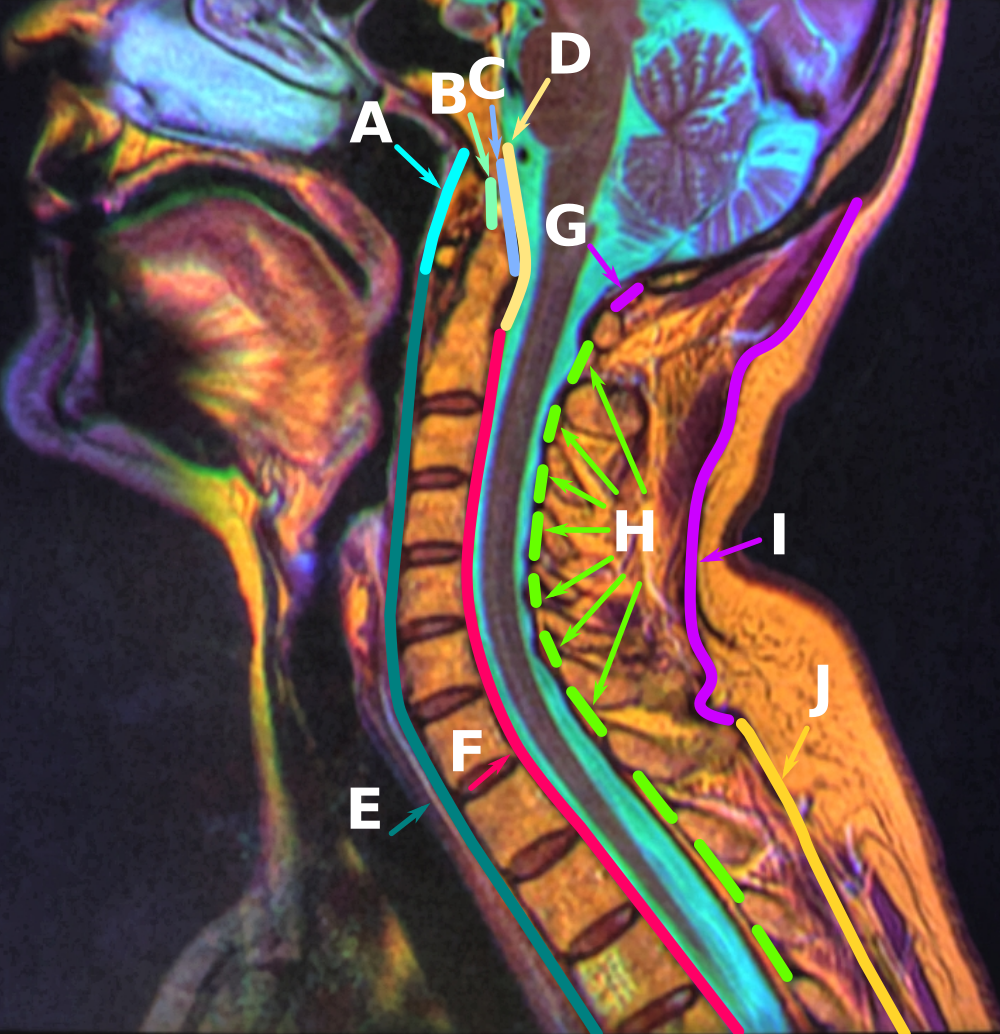Supraspinous Ligament on:
[Wikipedia]
[Google]
[Amazon]
The supraspinous ligament (also known as the supraspinal ligament) is a
 Between the spinous processes, the supraspinous ligament is continuous with the interspinous ligaments.
Between the spinous processes, the supraspinous ligament is continuous with the interspinous ligaments.
ligament
A ligament is a type of fibrous connective tissue in the body that connects bones to other bones. It also connects flight feathers to bones, in dinosaurs and birds. All 30,000 species of amniotes (land animals with internal bones) have liga ...
extending across the tips of the spinous process
Each vertebra (: vertebrae) is an irregular bone with a complex structure composed of bone and some hyaline cartilage, that make up the vertebral column or spine, of vertebrates. The proportions of the vertebrae differ according to their spina ...
es of the vertebra of the vertebral column
The spinal column, also known as the vertebral column, spine or backbone, is the core part of the axial skeleton in vertebrates. The vertebral column is the defining and eponymous characteristic of the vertebrate. The spinal column is a segmente ...
.
Anatomy
The supraspinous ligament connects the tips of thespinous process
Each vertebra (: vertebrae) is an irregular bone with a complex structure composed of bone and some hyaline cartilage, that make up the vertebral column or spine, of vertebrates. The proportions of the vertebrae differ according to their spina ...
es from the seventh cervical vertebra to the sacrum
The sacrum (: sacra or sacrums), in human anatomy, is a triangular bone at the base of the spine that forms by the fusing of the sacral vertebrae (S1S5) between ages 18 and 30.
The sacrum situates at the upper, back part of the pelvic cavity, ...
. Superior to the 7th cervical vertebra, the supraspinous ligament is continuous with the nuchal ligament
The nuchal ligament is a ligament at the back of the neck that is continuous with the supraspinous ligament.
Structure
The nuchal ligament extends from the external occipital protuberance on the skull and median nuchal line to the spinous p ...
. It is thicker and broader in the lumbar region than in the thoracic region, and intimately blended with the neighboring fascia
A fascia (; : fasciae or fascias; adjective fascial; ) is a generic term for macroscopic membranous bodily structures. Fasciae are classified as superficial, visceral or deep, and further designated according to their anatomical location.
...
in both these regions. Inferior to L4, the supraspinous ligament becomes indistinct, lost amid the prominent lumbar fascia
The lumbar fascia is the lumbar portion of the thoracolumbar fascia. It consists of three fascial layers - posterior, middle, and anterior - that enclose two (anterior and posterior) muscular compartments. The anterior and middle layers occur only ...
.
 Between the spinous processes, the supraspinous ligament is continuous with the interspinous ligaments.
Between the spinous processes, the supraspinous ligament is continuous with the interspinous ligaments.
Structure
The most superficial fibers of this ligament extend across 3-4 vertebrae, deeper fibres extend across 2-3 vertebrae, while the deepest connect the spinous processes of adjacent vertebrae.Function
The supraspinous ligament becomes taut when the spine is fully flexed. The supraspinous ligament, along with the posterior longitudinal ligament, interspinous ligaments and ligamentum flavum, help to limit hyperflexion of the vertebral column.Clinical significance
Lesions to the supraspinous ligament may result inpalpable
{{Short pages monitor